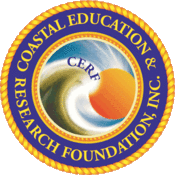Storm Deposits in Context of Seasonal through Decadal Water-Level Variances and Beach Geomorphic Change, Southwestern Lake Michigan
ABSTRACT
Mattheus, C.R.; Spitzer, E.; Rosario, L., and Pearce, K., 0000. Storm deposits in context of seasonal through decadal water-level variances and beach geomorphic change, southwestern Lake Michigan.
Decadal changes in base water level, which are up to 2 m in magnitude, and storms capable of generating waves >3 m in height affect many beach shorelines of the North American Great Lakes. Still, few geomorphic studies have addressed coastal morphodynamics under such complex and ever-changing lake hydrodynamic conditions. With extensive topographic monitoring activities underway since 2018 along Illinois’s portion of Lake Michigan coast, new avenues to systematically categorize and contextualize geomorphic change dynamics are available. This study offers a detailed assessment of beach topographic evolution along a historically progradational section of unobstructed shoreline along Illinois Beach State Park, located along the downdrift portion of a migrating ridge-plain promontory. Insights from pre- and poststorm topographic and colocational subsurface geophysical assessments are evaluated in context of seasonal through decadal patterns of geomorphic change. Study insights provide context for the effects of storms on beach-profile evolution over various lake-level positions, providing an architectural blueprint for subsurface depositional structures. This serves as a prerequisite for late Holocene paleo-reconstructions. lake-level rise-induced backshore accretion by way of shoreline-overwash processes occurred with minor changes to the shoreline position, with sand influx–facilitating profile aggradation in response to >1.5 m of lake-level rise between 2012 and 2020. Subsequent beach-profile adjustments, from 2020 to 2023, occurred only along the foreshore during rising and peak water levels, in response to ∼1 m fall in lake level. Pre- and poststorm subsurface reflection geophysical records, from the ∼3 m wave event in October 2023, resolve an ∼0.5 m thick storm deposit atop a ravinement surface, only a part of which is accounted for by topographic profile comparisons. Paleo-tempestite preservation potentials are reduced with post-2020 lowering of lake level by ∼1 m; nonetheless, the addition of ground-penetrating radar in monitoring provides a more thorough assessment of event-based geomorphic change.
Contributor Notes

